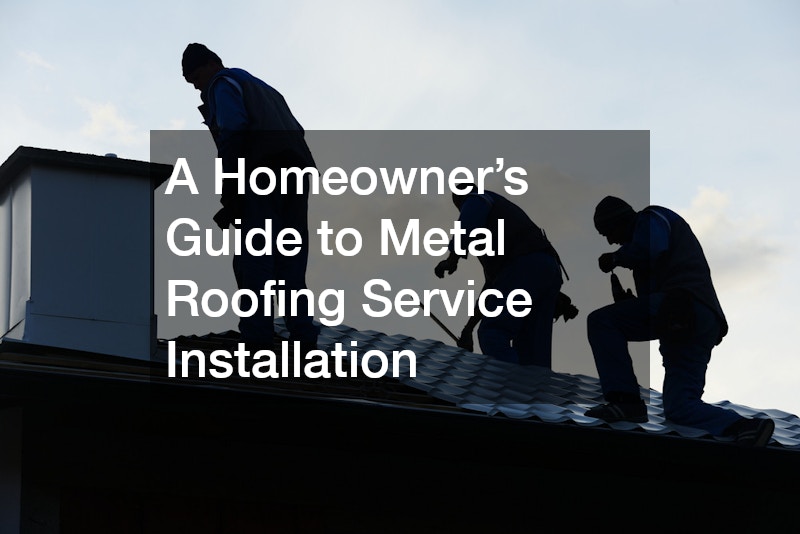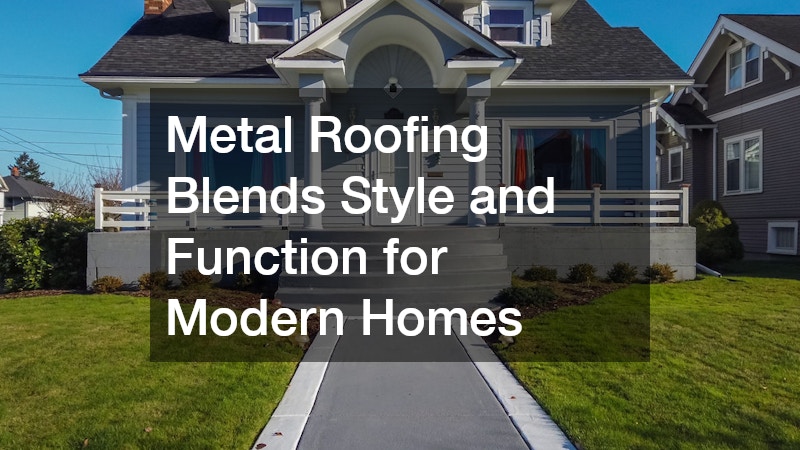
A Homeowners Guide to Metal Roofing Service Installation
Metal roofing has become an increasingly popular choice among homeowners due to its durability, energy efficiency, and modern aesthetic. This comprehensive guide will walk you through the essential aspects of installing a metal roof, addressing common concerns, and highlighting key benefits.
What are the Types of Metal Roofing Available?
Steel Roofing Options
The world of steel roofing offers several options, each with unique benefits and drawbacks. Steel roofing styles, such as galvanized and galvalume, are popular for their strength and affordability.
Galvanized steel is coated with a layer of zinc, which provides protection against corrosion. Conversely, Galvalume uses a combination of zinc and aluminum for better durability, particularly in harsh weather conditions.
Each type provides varying levels of longevity and maintenance needs, which can influence a homeowner’s decision. Choosing between galvanized and galvalume often depends on specific regional weather patterns and aesthetic preferences.
Alternative Metal Materials
In addition to steel, homeowners can explore other metal options like aluminum, copper, and zinc for their roofing needs. Aluminum is lightweight and resistant to corrosion, making it ideal for coastal environments.
Copper roofing is known for its distinct appearance and ability to withstand the test of time, developing a beautiful patina as it ages. Zinc roofing, while less common, is praised for its durability and minimal maintenance requirements.
The choice between these materials often comes down to aesthetics, cost, and the specific demands of the home’s location. Each material offers its own set of advantages, suited for different architectural styles and personal tastes.
How to Choose the Right Metal Roofing Contractor?
Evaluating Contractor Qualifications
Selecting the right contractor is critical for successful metal roof installation. Homeowners should prioritize contractors with proper certifications, insurance, and a proven track record of expertise in metal roofing systems.
Credentials such as manufacturer endorsements can provide peace of mind that the contractor is skilled in installing specific types of metal roofs. It’s also beneficial to check for membership in professional roofing organizations, which can indicate a commitment to industry standards.
References from previous clients can offer insight into a contractor’s reliability and workmanship. Hiring a qualified contractor helps ensure that the installation process is smooth and meets the high standards metal roofing demands.
Obtaining and Comparing Quotes
Gathering multiple quotes from different contractors is essential to making an informed decision. Each estimate should outline the costs of materials, labor, and any additional services clearly.
It’s important to pay attention to the scope of work and timeline provided in the quotes to avoid any hidden expenses. Comparing offers effectively involves not just looking at price but evaluating the value and thoroughness of each proposal.
Homeowners should ask for clarification on unclear aspects and ensure all quotes are comprehensive. Understanding these details helps make a confident choice in selecting the best contractor for the job.
What is the Installation Process and Timeline?
Initial Planning and Preparation
The initial phase of planning and preparation is crucial for a successful metal roof installation. This stage includes a thorough inspection of the current roof structure to ensure it’s capable of supporting the new metal roof.
Obtaining necessary permits from local authorities is another critical step, as it ensures compliance with building codes. Proper planning also involves ordering materials in advance to avoid any potential delays during installation.
Homeowners should collaborate with contractors to establish a realistic timeline and clear expectations. Proper preparation sets the foundation for a seamless installation process.
Installation Steps and Typical Duration
The installation process involves several key steps, starting with removing the existing roofing material. Next, contractors will install underlayment, which provides an additional layer of protection against moisture.
Once the underlayment is in place, the metal panels or shingles are carefully positioned and fastened. The final touches include sealing joints and edges to ensure watertight integrity.
Typically, a complete metal roof installation can range from a few days to a couple of weeks, depending on the roof’s size and complexity. Understanding this timeline allows homeowners to plan accordingly and anticipate any disruptions.
How to Maintain and Care for a Metal Roof?
Routine Maintenance Tips
Regular maintenance is vital to prolonging the lifespan of a metal roof. Homeowners should routinely clean debris from gutters and check for any signs of damage after severe weather events.
It’s advisable to schedule periodic inspections with a professional to catch any issues early. Keeping the roof’s surface clean and free from debris minimizes the risk of corrosion and aesthetic deterioration.
Simple tasks like trimming tree branches that hang over the roof can prevent potential damage. With regular maintenance, homeowners can ensure their metal roof remains in excellent condition for many years.
Handling Repairs and Common Issues
While metal roofs are known for their durability, they can still experience issues such as leaks or loose fasteners. Identifying and addressing these problems promptly can prevent more extensive damage.
Minor repairs might be manageable for handy homeowners, but complex issues often require professional intervention. Understanding when to seek professional repairs is crucial in maintaining the roof’s integrity.
Homeowners should document and address any repairs while they are still minor. This proactive approach helps maintain the roof’s longevity and ensures that it continues to protect the house effectively.
By understanding the types of materials available, selecting the right contractor, grasping installation procedures, and knowing maintenance requirements, homeowners can effectively manage their metal roofing service installation and enjoy the long-term benefits of a reliable and energy-efficient roofing solution. The combination of visual appeal and practical advantages makes metal roofing an excellent investment for modern homes.
